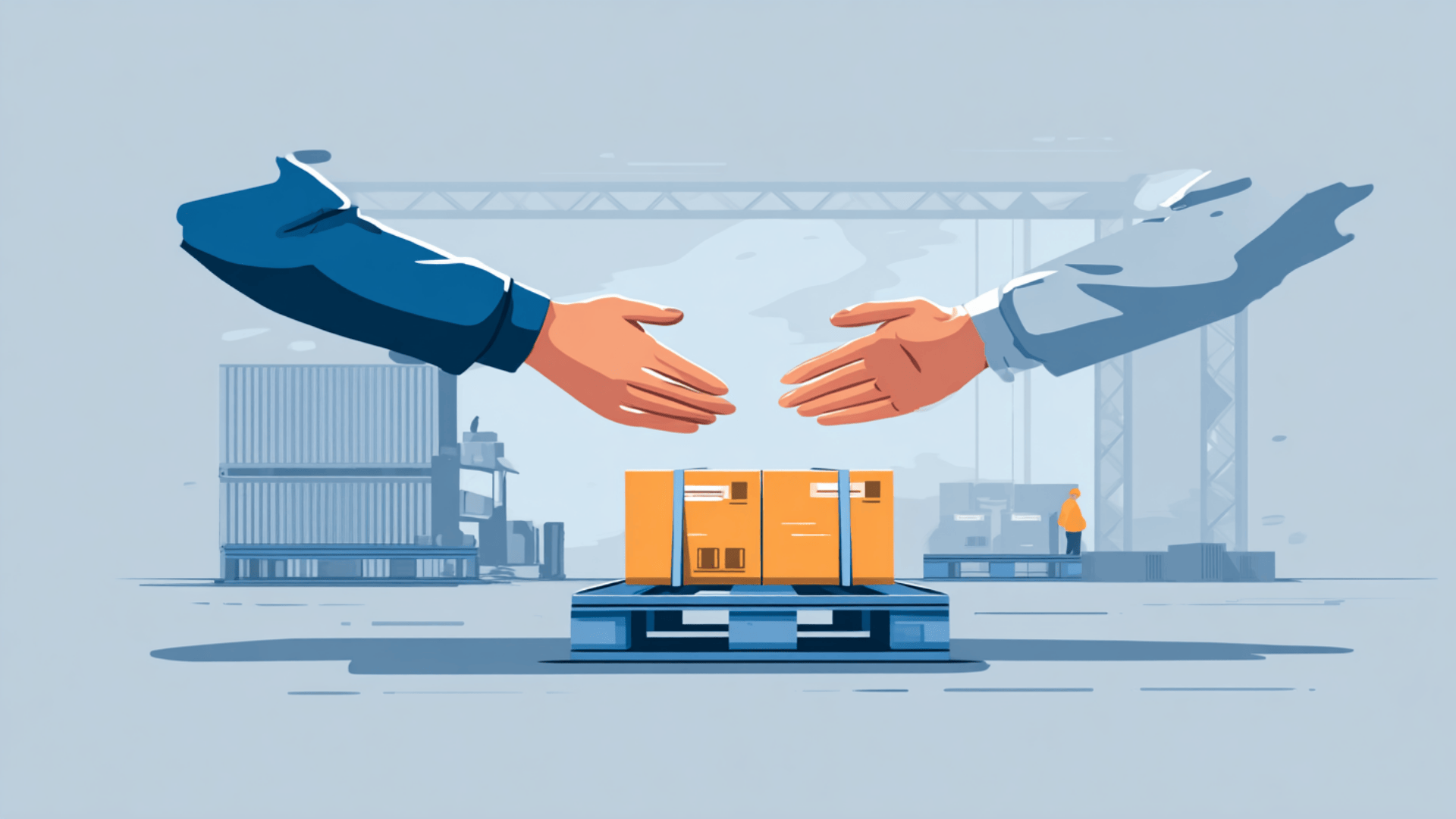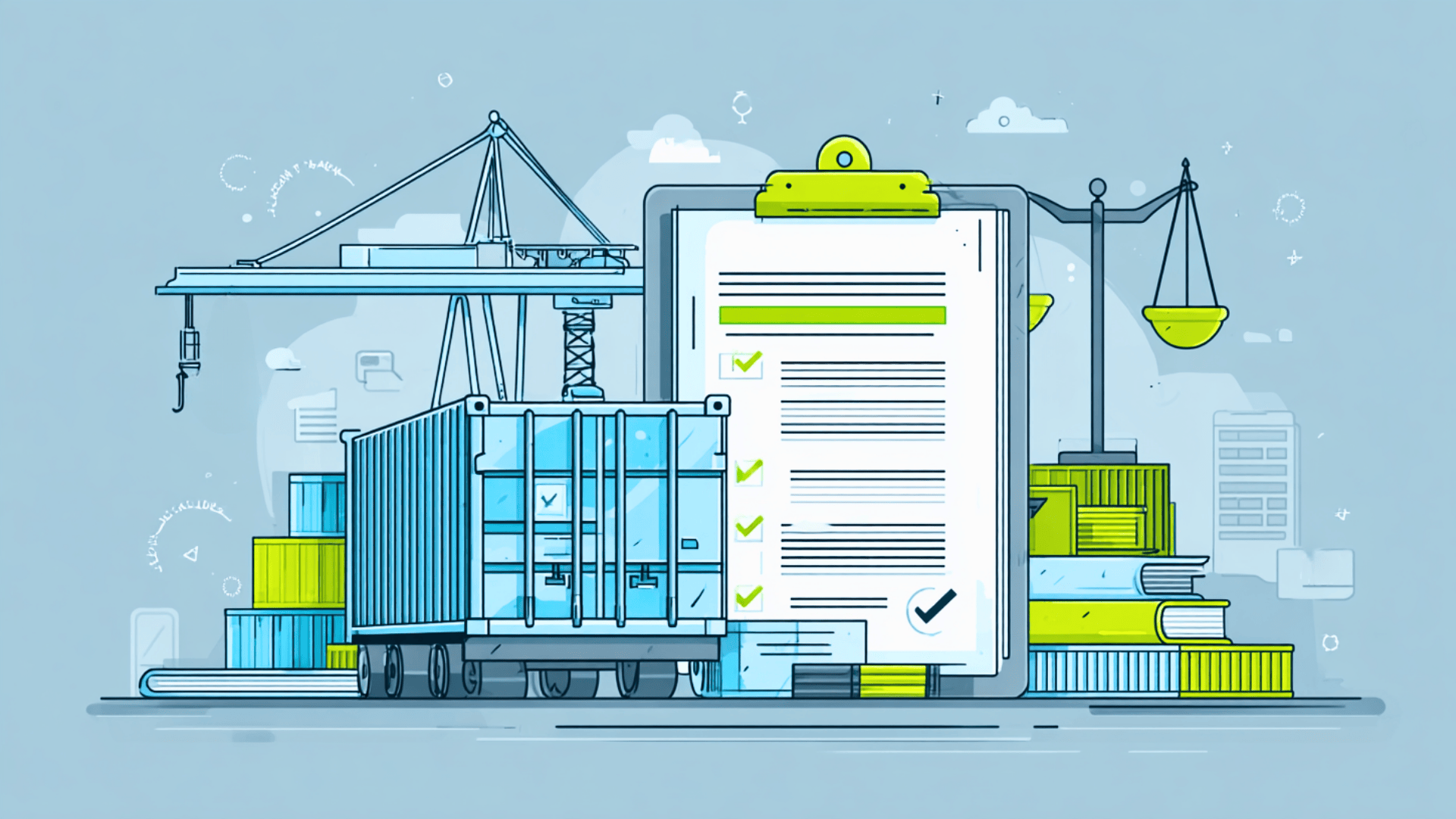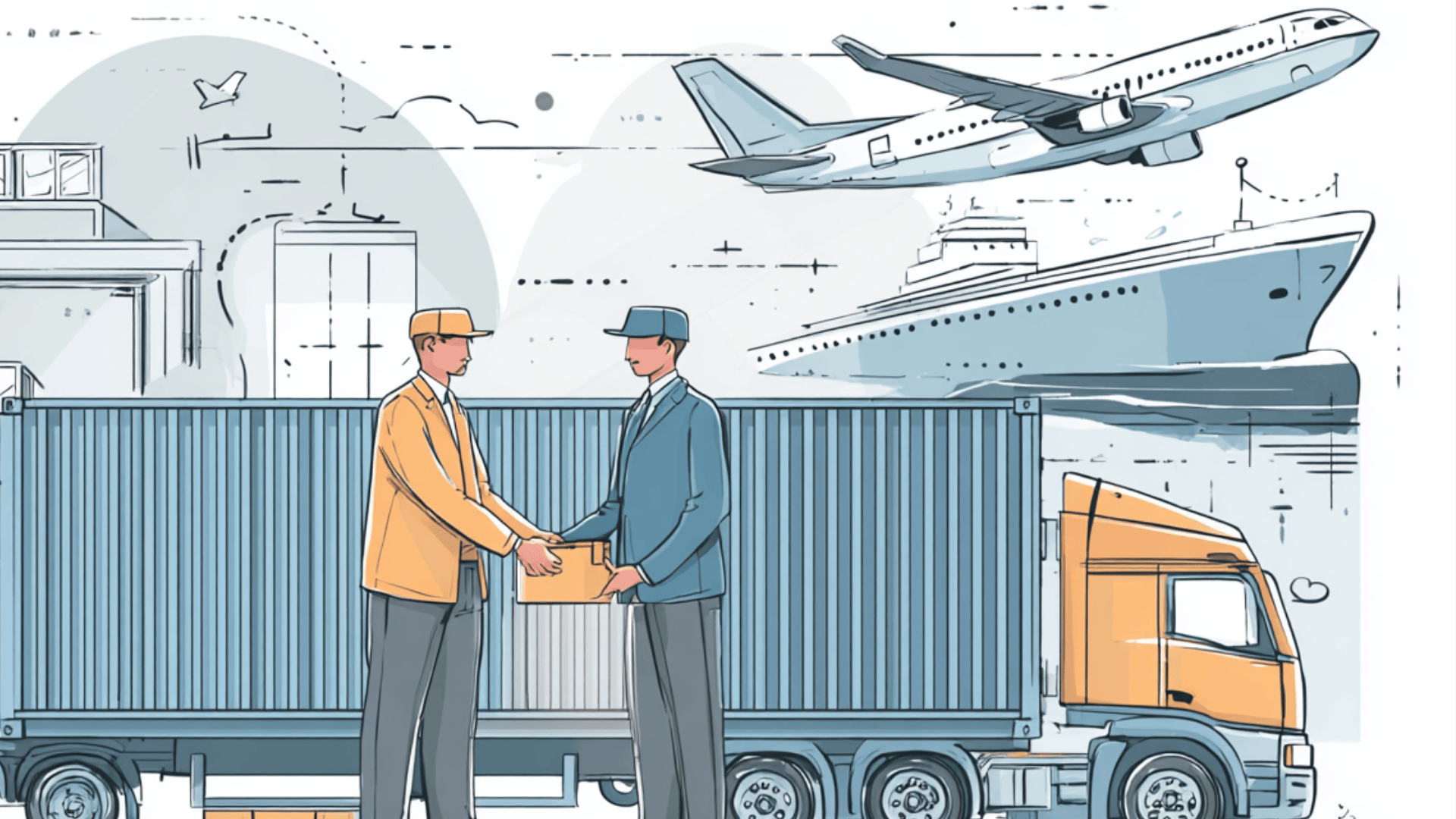Shipping across borders isn’t just about moving goods; it’s about knowing who carries the responsibility at each step. That’s where FCA shipping terms come in.
Many traders overlook how a simple handoff point can decide who covers costs, who manages customs, and who takes on risk.
I’ve seen businesses run into trouble simply because the “where” and “when” of delivery weren’t spelled out clearly.
Understanding FCA can save you from costly surprises and give you more control over your shipments. Let’s break it down step by step so you know exactly how it works and when to use it.
What Does FCA (Free Carrier) Mean?
FCA, or Free Carrier, is one of the Incoterms rules set by the International Chamber of Commerce. It explains who takes care of the goods, and at what point the responsibility shifts from the seller to the buyer.
Under Incoterms 2020, FCA means the seller is responsible for delivering the goods to a carrier chosen by the buyer at a specific place. Once the goods are handed over, the risk moves to the buyer.
In Incoterms 2025, FCA still works the same way, but updates focus on making the “named place” more clearly defined. This avoids confusion and helps both sides know exactly when risk and costs change hands.
FCA can be used with any type of transport. You’ll see it in air, road, rail, sea, and even multimodal shipments. This flexibility makes it one of the most widely used Incoterms in global trade.
The Role of the “Named Place”
The named place is the key detail in an FCA agreement. It’s where the seller’s job ends and the buyer’s job begins. This could be:
- The seller’s warehouse
- A freight forwarder’s terminal
- A port or airport
If the place isn’t named correctly, disputes can happen later. That’s why it’s important to be exact and clear when writing the contract.
Seller vs. Buyer Responsibilities under FCA
FCA works because it splits the job between the seller and the buyer. Each side has clear tasks, which helps avoid confusion later.
Seller’s Duties
The seller takes care of everything up to the point of delivery. That includes:
- Packaging: Making sure the goods are safe and ready for export.
- Export clearance: Handling customs paperwork, duties, and taxes in the exporting country.
- Delivery to the named place: Bringing the goods to the location chosen in the contract, such as a terminal, warehouse, or port.
Once the goods reach the carrier at the named place, the seller’s risk ends.
Buyer’s Duties
The buyer takes over after the seller delivers. Their main jobs include:
- Choosing the carrier: Picking and arranging the transport company.
- Import clearance: Handling customs duties and taxes in the destination country.
- Freight and insurance costs: Paying for the main shipping route and any insurance needed.
- Onward delivery: Managing the final transport from the arrival terminal to their warehouse or customer.
This means the buyer carries the bigger share of transport costs and risks once the goods are handed over.
Responsibility Transfer
The handover in FCA is clear. The seller is in charge until the goods are delivered to the carrier at the named place. After that, the buyer takes over.
Here’s how it works step by step:
- The seller handles packaging, export clearance, and getting the goods to the named place.
- Once the goods are loaded onto the buyer’s carrier, the seller’s risk ends.
- From that point, the buyer pays for the main transport, insurance, import clearance, and the final delivery to their own site or customer.
This split makes it easy to see where one side’s job ends and the other’s begins, which helps prevent disputes later on.
When Does Risk Transfer in FCA?

One of the most important parts of FCA is knowing exactly when the risk shifts from seller to buyer. Risk here means who is responsible if something happens to the goods during the process.
Explanation of the Risk Point
The seller carries the risk up until the goods are delivered to the buyer’s chosen carrier at the named place. This could be the seller’s warehouse, a freight terminal, or another location agreed on in the contract.
As soon as the carrier takes control, the buyer takes on the risk. From that point, if the goods are damaged, lost, or delayed, it’s the buyer’s responsibility to handle the problem.
Common Misunderstandings
Many people assume risk only changes hands once the goods are on the ship or plane. That’s not true under FCA. The switch happens earlier, right at the named place, as soon as the goods are given to the carrier.
Another common mistake is not clearly defining the named place in the agreement. If it’s vague, disputes can happen later about who was responsible at the time damage occurred. Being precise in the contract avoids these issues.
FCA vs. Other Incoterms
FCA often gets compared to other Incoterms, and it’s easy to see why. Each term changes who handles what, so it helps to line them up side by side.
| Incoterm | Seller’s Responsibility | Buyer’s Responsibility | Key Difference from FCA |
|---|---|---|---|
| EXW (Ex Works) | Makes goods available at the seller’s premises. No export clearance. | Handles all transport, export/import clearance, and costs. | Buyer takes on almost everything. FCA requires seller to manage export clearance and delivery to carrier. |
| FOB (Free on Board) | Covers costs and risk until goods are loaded on a vessel. Mainly for sea freight (bulk). | Takes over once goods are on board the ship. | FOB is for bulk sea freight, while FCA works better for containers and all transport modes. |
| DAP (Delivered at Place) | Arranges and pays for main transport to buyer’s country. Delivers to destination point. | Handles import clearance, duties, and final delivery. | DAP keeps seller responsible longer. FCA shifts risk and cost to buyer much earlier. |
Looking at these side by side makes it clear: FCA offers flexibility across transport modes, while EXW, FOB, and DAP each shift responsibility in very different ways.
Advantages & Disadvantages of FCA
FCA has clear strengths, but it also comes with a few challenges. Let’s look at both sides so you can see if it’s the right choice for your shipment.
Advantages of FCA
- Seller’s responsibility ends earlier, reducing their risk.
- Buyer gets more control over choosing carriers and costs.
- Works with any transport mode, including multimodal shipments.
- Best option for containerized freight, avoiding FOB disputes.
- Clear risk transfer point at the named place.
Disadvantages of FCA
- Buyer takes on risk and costs sooner than with terms like DAP.
- Unclear contracts on the “named place” can lead to disputes.
- Buyers without logistics experience may struggle with customs and freight.
- Insurance responsibility shifts to the buyer earlier.
FCA works best when shipments are containerized or when the buyer wants to control transport and costs directly. If both sides clearly agree on the named place, FCA is one of the most straightforward and reliable Incoterms to use.
Common Applications of FCA in International Trade
FCA is popular in global trade because it works in many different situations. Here are a few of the most common.
Containerized Shipments
FCA is often used for container freight. The seller delivers the goods to a terminal or warehouse, and the buyer’s carrier takes over from there.
This avoids the confusion that comes with using FOB, which was designed for bulk cargo rather than containers.
Airfreight and Multimodal
FCA also works well when goods move by air, road, or rail, or even a mix of all three.
Because the seller hands the goods to the buyer’s carrier at the named place, the rule fits smoothly into multimodal transport setups.
Example Case Study: Exporter in China – Buyer in USA
Let’s say a seller in Shanghai agrees to ship under FCA terms. They clear the goods for export and deliver them to a carrier chosen by the buyer at the port.
Once the carrier takes the goods, the buyer covers the sea freight, insurance, import duties in the U.S., and delivery to their final warehouse.
This example shows how FCA creates a clear handoff point, giving both sides certainty about their roles
Common Pitfalls & How to Avoid Them
Even though FCA is straightforward, mistakes still happen. Most come from unclear agreements or assumptions.
- Vague named place: If the contract doesn’t clearly state the exact location, disputes can arise over who was responsible when damage or delays occurred.
- Unloading confusion: Some assume the seller unloads at the named place, but under FCA, that task belongs to the buyer unless agreed otherwise.
- Skipping insurance: Buyers sometimes forget that insurance becomes their job once the seller hands over the goods.
- Using FCA, like FOB: FOB is meant for sea freight, while FCA works better for containers. Using them interchangeably can cause problems.
- Overlooking customs prep: Buyers new to FCA may underestimate the work involved in handling import duties and paperwork.
Avoiding these pitfalls is simple: write contracts with precision, make sure both sides understand their roles, and never leave the “named place” open to guesswork.
FCA Legal and Insurance Considerations

FCA works best when both sides stay aligned with the latest rules and cover themselves properly.
Compliance with Incoterms 2020 vs. 2025
FCA is recognized under both Incoterms 2020 and 2025. The main difference is that the 2025 update places more focus on defining the “named place” clearly.
This change helps reduce disputes over when risk and responsibility shift. Making sure your contract follows the updated rules keeps you legally protected.
Insurance Best Practices Under FCA
FCA doesn’t require the seller to arrange insurance. Once the goods are handed to the carrier, the buyer is responsible. To avoid gaps, buyers should:
- Arrange coverage before the goods are picked up.
- Confirm insurance starts from the exact handover point.
- Make sure the policy covers the full route, not just the main leg.
This way, the shipment is protected the moment the seller’s responsibility ends.
Documentation Requirements
Both parties should prepare clear paperwork to avoid delays:
- Seller: Export licenses, customs clearance, and proof of delivery to the carrier.
- Buyer: Import permits, customs paperwork, and insurance certificates.
Proper documentation not only keeps the shipment moving but also serves as proof if disputes come up later.
Wrapping Up
FCA shipping terms give both buyers and sellers a clear structure, but success depends on planning ahead. The real advantage lies in defining the named place with precision and making sure responsibilities are understood on both sides.
I’ve noticed that when contracts are vague, issues often show up later in customs or insurance claims.
The best practice is to put everything in writing early, review logistics plans carefully, and double-check that both parties are aligned. By treating FCA as a partnership instead of just a rule, trade runs far smoothly.
Want more insights? Check out my other blogs for practical shipping and logistics tips.















